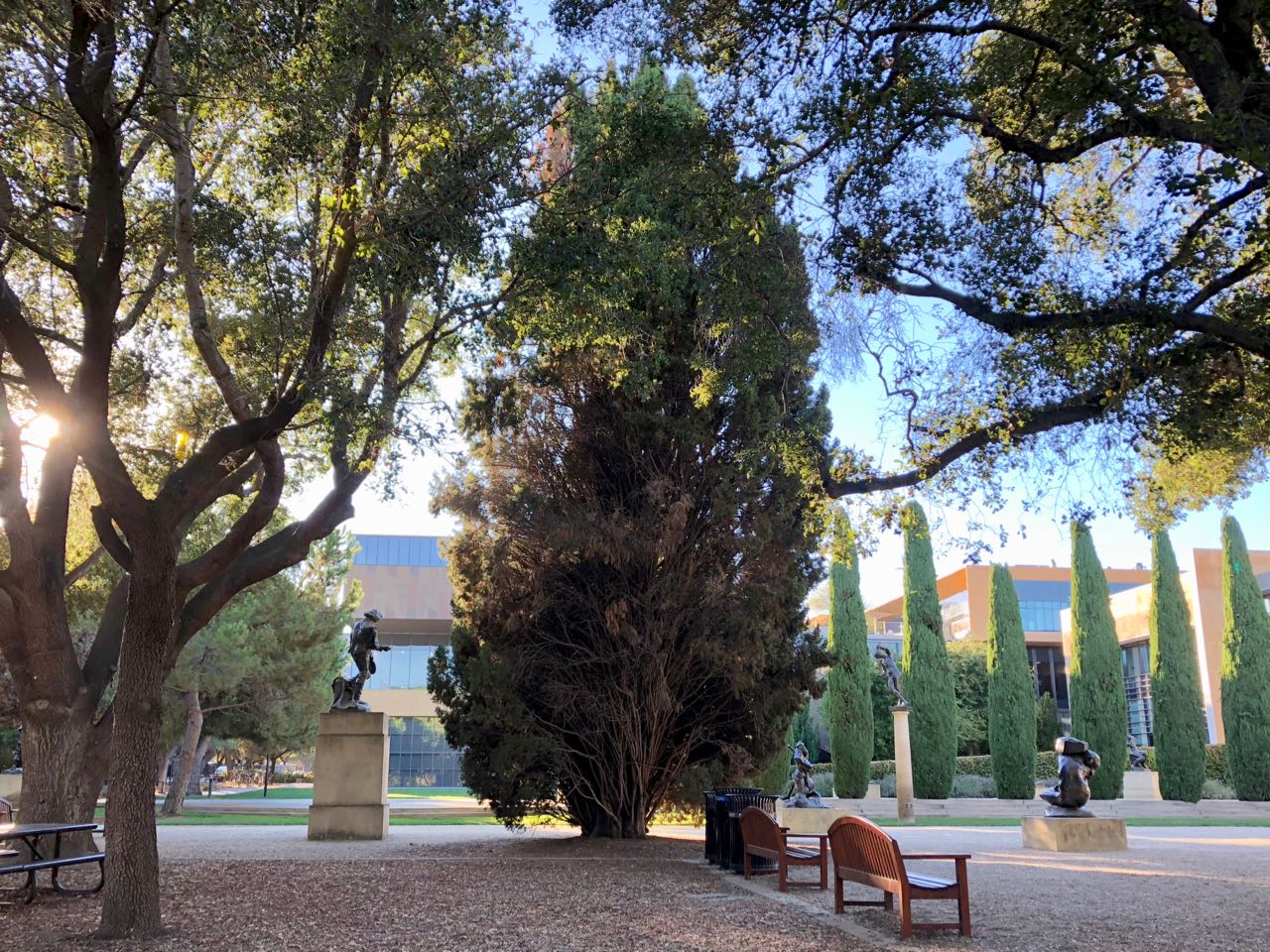Cupressus sempervirens
 Italian cypress
Italian cypress

The narrow, upright Italian cypress is seen in many places on campus, for example at the south side of the Durand Building on Panama Mall. A group of nine tall specimens is at the bend of Santa Fe Avenue, and a lengthy planting is at Mayfield Avenue and Coronado Avenue. One survives of several planted by the university’s first gardener, Thomas Douglas, behind the Mausoleum; find it just beyond the meandering pathway. The rotund specimen in the Cantor Center lawn near Lomita Drive and Roth Way is an outstanding example of an older specimen. Botanist LeRoy Abrams’ 1913 survey of campus conifers lists the wide-branching form, C. sempervirens horizontalis, in that area.
The globular cones are about an inch long and pass through a golden-sheened phase worthy of a Christmas tree ornament. The leaves are tiny scales, like those of the Monterey cypress, packed on the twig to give a four-sided feel. A classical tree frequently mentioned by Greek and Roman writers, along with elm and white poplar, as suited to burial places. “And in sad cypress let me be laid,” sang the clown in Twelfth Night, 4:12, probably referring to the wood, which was used to make insect-repellent chests. It has been widely planted around the world. Tuscany is famous for its cypresses, although the tree apparently is not native to Italy. The Italian language distinguishes the masculine cipresso, the upright form, from the feminine cipressa which has a rounded outline. A tree on Santa Ynez may be a cipressa. The doors of St. Peter’s Basilica in the Vatican endured for about a thousand years before being replaced, a testament to the extraordinary durability of the timber.
A major catastrophe struck in Tuscany when, in the 1970s, one-quarter of all the cypresses were sick or dead. While Coryneum cardinale, the fungus afflicting the Monterey Cypress, may be a cause, other factors (such as pollution) may be involved. The Tuscan landscape of cypresses and olive groves, unchanged for centuries, was radically affected. The lesson for us on campus where we have already had bad experiences with cypresses, elms, pines, and ashes, is to aim for diversity.
Name derivation: Cupressus – classical Latin name for C. sempervirens; sempervirens – always green.
About this Entry: The main text of this entry is from the book Trees of Stanford and Environs, by Ronald Bracewell, published 2005. Edits to old Cantor specimen, cone description, cypress-wood doors of St. Peter’s (Jan 2023, SP).



